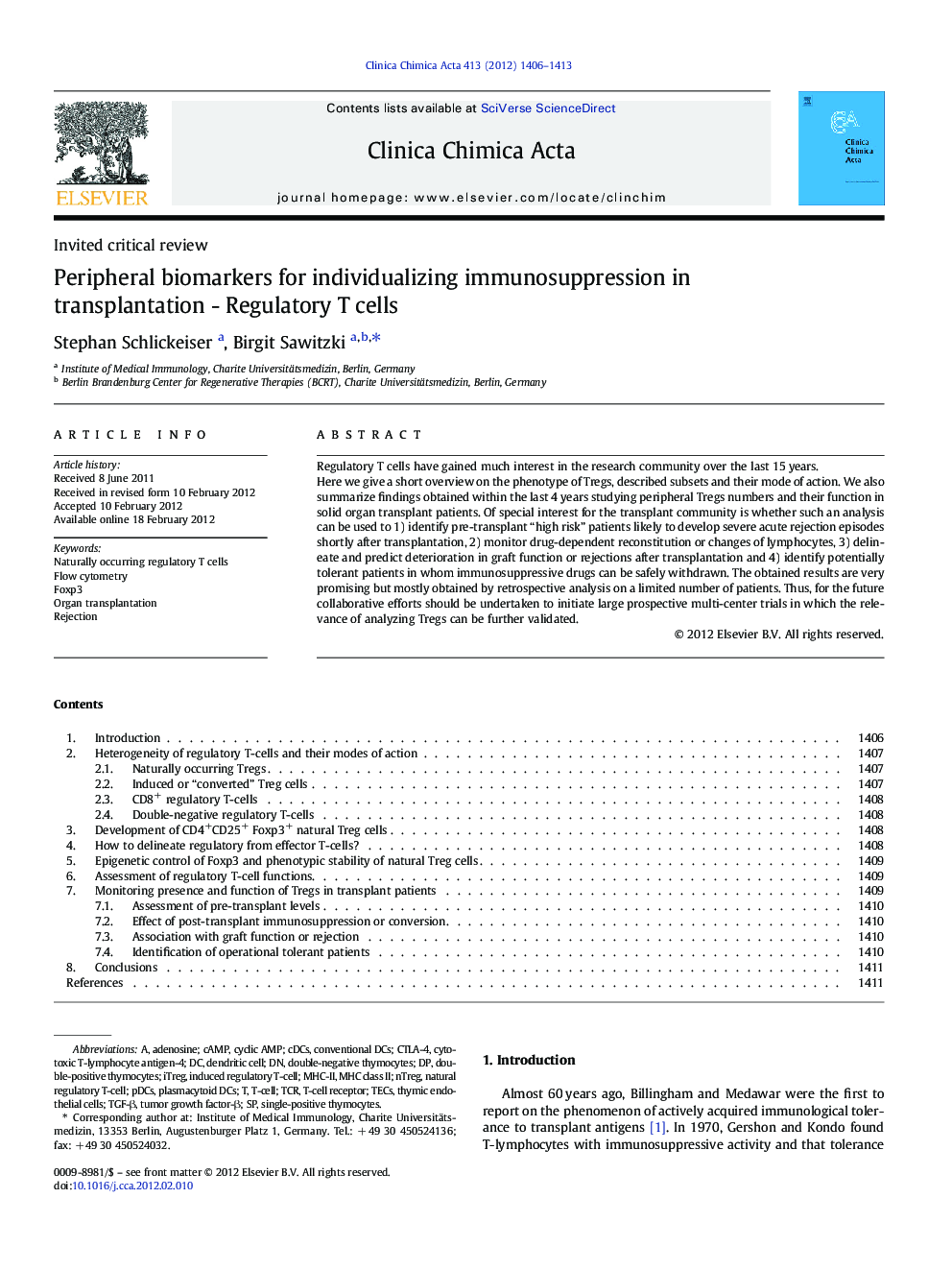| Article ID | Journal | Published Year | Pages | File Type |
|---|---|---|---|---|
| 1965913 | Clinica Chimica Acta | 2012 | 8 Pages |
Regulatory T cells have gained much interest in the research community over the last 15 years.Here we give a short overview on the phenotype of Tregs, described subsets and their mode of action. We also summarize findings obtained within the last 4 years studying peripheral Tregs numbers and their function in solid organ transplant patients. Of special interest for the transplant community is whether such an analysis can be used to 1) identify pre-transplant “high risk” patients likely to develop severe acute rejection episodes shortly after transplantation, 2) monitor drug-dependent reconstitution or changes of lymphocytes, 3) delineate and predict deterioration in graft function or rejections after transplantation and 4) identify potentially tolerant patients in whom immunosuppressive drugs can be safely withdrawn. The obtained results are very promising but mostly obtained by retrospective analysis on a limited number of patients. Thus, for the future collaborative efforts should be undertaken to initiate large prospective multi-center trials in which the relevance of analyzing Tregs can be further validated.
► Regulatory T cells are heterogeneous with nTregs being mostly investigated. ► Tregs frequencies reveal allo-immune status of transplant patients. ► Prospective multi-center clinical trials are needed to validate the results.
